May 2023
Fish Reefs Made of Reused Seashells Help Create a Rich and Healthy Ocean
-
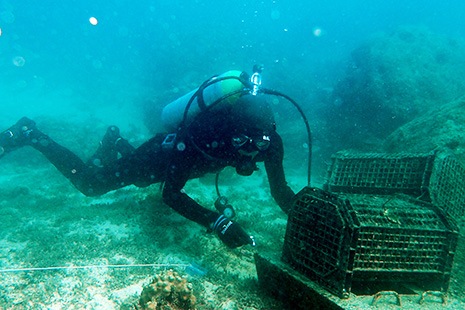
A diver surveys the effects of a JF Shell Nurse facility installed underwater -
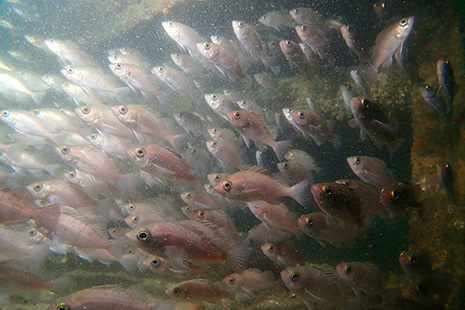
A school of Japanese rockfish swarming a shell fish reef
-
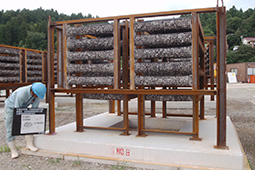
A shelf-like standard JF Shell Nurse installation (fish-breeding type (2.2 model)) -
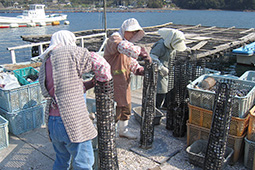
JF Shell Nurse mesh-like tubes filled with shells -

Large Ise lobsters living between shell shelves -
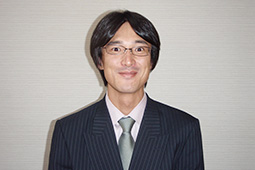
Katayama Masaki, President, Ocean Construction Co., Ltd. -
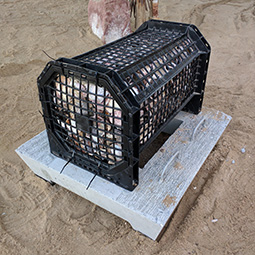
A compact JF Shell Nurse installation (Kaiso-kun)

A Japanese company has developed a technology to create rich, healthy fishing grounds by artificially building fish reefs from reused oyster and scallop shells, which until now have typically been discarded as waste. The use of shells allows the reefs to attract fish because of the abundance of microorganisms and seaweed that attach to the fish reefs and serve as food for the fish.
The term "fish reefs" refers to rocky areas in the ocean where fish tend to gather. They are sometimes artificially constructed to attract fish, usually by sinking stones, concrete blocks, or abandoned ships. Katayama Masaki, President, Ocean Construction Co., Ltd., attributes the idea of using shells to create artificial fish reefs to his father and previous president of the company, Katayama Keiichi. When Keiichi was diving in the sea, he happened to peek under an oyster raft and saw that it was teeming with fish. Keiichi realized that shells attract fish, and came up with the idea of building a fish reef made of shells. This inspiration came to Keiichi in the 1970s, setting him on a long path of development.

When Keiichi visited university professors to seek advice on the design and functional verification of shell fish reefs, initially he was not taken seriously at all. When he went to discuss his plan with the local government, he was rejected with the accusation that he intended to bring waste from other prefectures. Yet, even in this period fraught with difficulties, he gradually began to gain understanding by carefully persuading and explaining the plan to the concerned parties, and he made progress, step by step.


The first commercial product was not built until 1990, making for a long path indeed. It is called JF Shell Nurse. Its basic component is made by placing about 330 oyster and scallop shells into a mesh-like tube 15 cm in diameter and 98 cm in length, creating a case filled with shells. As an example, the standard fish reef model (6.0 model), these cases are attached to a shelf-like frame made of steel that is 7.7 m square in width and 6.9 m high,* just like the frame of a house. This size uses a total of approximately 1,040 kilograms, or 86,000 shells. Naturally, as a commercial product, JF Shell Nurse had to have a certain level of durability and be able to withstand 30 years in the sea. In order to verify the durability of the product, the company had to incorporate the opinions of experts in a range of fields, taking into consideration various factors, such as the corrosive impact of seawater. This is why it took such a long time to design and develop the product.

Although they took a long time to develop, shell fish reefs actually offer a number of advantages. One is that they enable the reuse of enormous amounts of shells that otherwise would have been thrown away, thereby contributing to waste reduction. Another is that the profits of fishermen increase because they can catch more high-value fish. A lot of high-end fish species, such as yellowtail, grouper, sea bream, flounder, and scorpionfish, gather around fish reefs made of shells, enabling fishermen to catch fish of greater market value. Furthermore, it has also been confirmed that 300 times more organisms that fish feed on gather on the shells of fish reefs, than on conventional artificial fish reefs, such as reefs made of blocks. In terms of fishing efficiency, results indicate that this technology enabled an approximately 150% increase in efficiency compared to conventional artificial fish reefs.

As these effects and benefits gradually took hold, the installation of JF Shell Nurse facilities became established as a public works project. Installation work has advanced with local governments placing orders for the facilities and the national government providing budgetary support. As of now, some 16,000 shell fish reef facilities have been installed in coastal areas throughout Japan. In addition, the company has expanded the JF Shell Nurse business into Mexico, where the disposal of shells was a problematic issue. This was the first business outside Japan for the company.
Katayama Masaki, the current president, says he would like to further promote research and development of ocean-friendly fish reefs in the future. In Japan, the term satoumi refers to coastal areas where biological productivity and biodiversity have increased thanks to human interaction. Katayama says that he would like to expand this business in order to enhance satoumi and enrich the coastal areas of the world's oceans. He is convinced that the satoumi concept, which originated in Japan, a maritime nation surrounded by oceans on all sides, is an optimal solution for the world's oceans, which are facing the problems of declining fish catches and increasing pollution. This conviction is the foundation of his commitment to further promote the utilization of shell fish reefs.

* Dimensions of the standard 6.0 model. Other 6.0 models include the wide type (10 m square in width and 6 m high).

